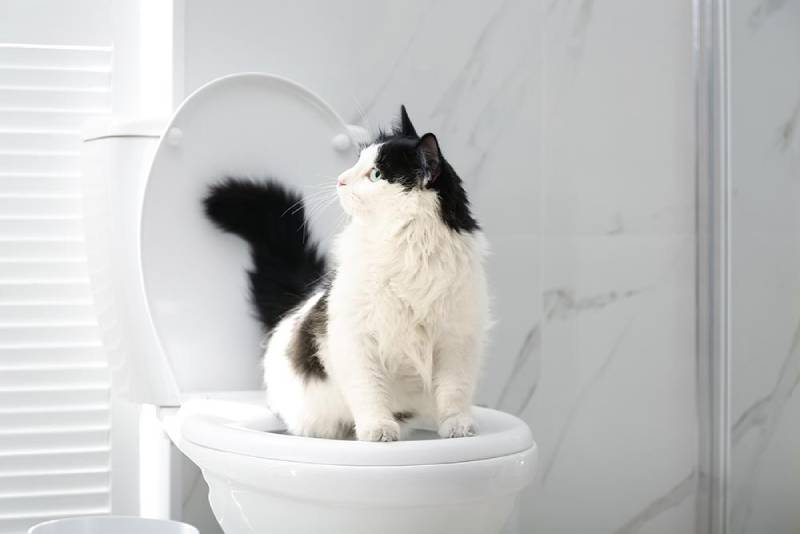Why You Should Never Flush Cat Poop Down Your Toilet - Important Information
Why You Should Never Flush Cat Poop Down Your Toilet - Important Information
Blog Article
We've come across this great article on Can You Flush Cat Poop Down The Toilet? listed below on the web and thought it made sense to relate it with you on this site.
Introduction
As cat proprietors, it's necessary to be mindful of exactly how we take care of our feline close friends' waste. While it might appear convenient to flush feline poop down the commode, this technique can have damaging consequences for both the atmosphere and human health.
Alternatives to Flushing
Luckily, there are more secure and more accountable means to dispose of pet cat poop. Think about the complying with options:
1. Scoop and Dispose in Trash
The most usual technique of throwing away cat poop is to scoop it right into a naturally degradable bag and throw it in the garbage. Be sure to utilize a dedicated trash inside story and deal with the waste without delay.
2. Use Biodegradable Litter
Choose eco-friendly cat litter made from products such as corn or wheat. These clutters are eco-friendly and can be safely gotten rid of in the garbage.
3. Hide in the Yard
If you have a backyard, take into consideration burying cat waste in a designated area away from vegetable yards and water resources. Make certain to dig deep adequate to stop contamination of groundwater.
4. Mount a Pet Waste Disposal System
Buy a family pet garbage disposal system particularly developed for cat waste. These systems use enzymes to break down the waste, lowering smell and environmental effect.
Health Risks
In addition to ecological problems, flushing cat waste can likewise present wellness threats to people. Cat feces might have Toxoplasma gondii, a parasite that can trigger toxoplasmosis-- a potentially serious health problem, particularly for pregnant females and individuals with weakened immune systems.
Ecological Impact
Flushing pet cat poop presents damaging pathogens and bloodsuckers into the water supply, positioning a substantial threat to aquatic environments. These impurities can negatively impact marine life and compromise water quality.
Conclusion
Responsible animal ownership extends beyond providing food and shelter-- it additionally entails correct waste administration. By refraining from flushing cat poop down the commode and going with different disposal techniques, we can reduce our ecological impact and safeguard human health.
Why Can’t I Flush Cat Poop?
It Spreads a Parasite
Cats are frequently infected with a parasite called toxoplasma gondii. The parasite causes an infection called toxoplasmosis. It is usually harmless to cats. The parasite only uses cat poop as a host for its eggs. Otherwise, the cat’s immune system usually keeps the infection at low enough levels to maintain its own health. But it does not stop the develop of eggs. These eggs are tiny and surprisingly tough. They may survive for a year before they begin to grow. But that’s the problem.
Our wastewater system is not designed to deal with toxoplasmosis eggs. Instead, most eggs will flush from your toilet into sewers and wastewater management plants. After the sewage is treated for many other harmful things in it, it is typically released into local rivers, lakes, or oceans. Here, the toxoplasmosis eggs can find new hosts, including starfish, crabs, otters, and many other wildlife. For many, this is a significant risk to their health. Toxoplasmosis can also end up infecting water sources that are important for agriculture, which means our deer, pigs, and sheep can get infected too.
Is There Risk to Humans?
There can be a risk to human life from flushing cat poop down the toilet. If you do so, the parasites from your cat’s poop can end up in shellfish, game animals, or livestock. If this meat is then served raw or undercooked, the people who eat it can get sick.
In fact, according to the CDC, 40 million people in the United States are infected with toxoplasma gondii. They get it from exposure to infected seafood, or from some kind of cat poop contamination, like drinking from a stream that is contaminated or touching anything that has come into contact with cat poop. That includes just cleaning a cat litter box.
Most people who get infected with these parasites will not develop any symptoms. However, for pregnant women or for those with compromised immune systems, the parasite can cause severe health problems.
How to Handle Cat Poop
The best way to handle cat poop is actually to clean the box more often. The eggs that the parasite sheds will not become active until one to five days after the cat poops. That means that if you clean daily, you’re much less likely to come into direct contact with infectious eggs.
That said, always dispose of cat poop in the garbage and not down the toilet. Wash your hands before and after you clean the litter box, and bring the bag of poop right outside to your garbage bins.
https://trenchlesssolutionsusa.com/why-cant-i-flush-cat-poop/

We hope you enjoyed our topic on How to Dispose of Cat Poop and Litter Without Plastic Bags. Many thanks for taking a few minutes to read through our article. If you appreciated our page please do not forget to pass it around. Bless you for your time. Visit again soon.
Call Today Report this page